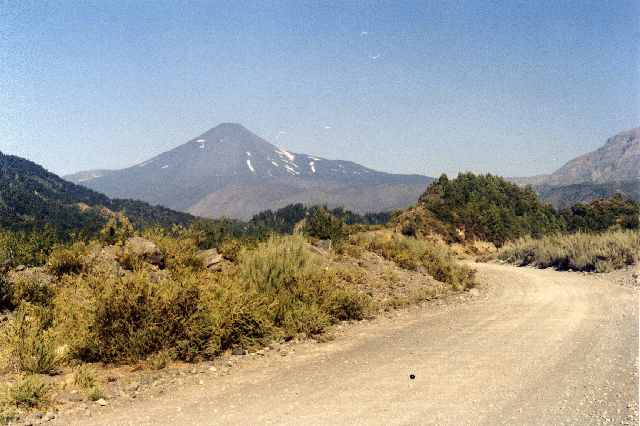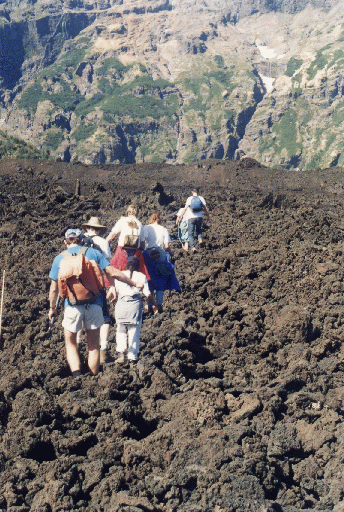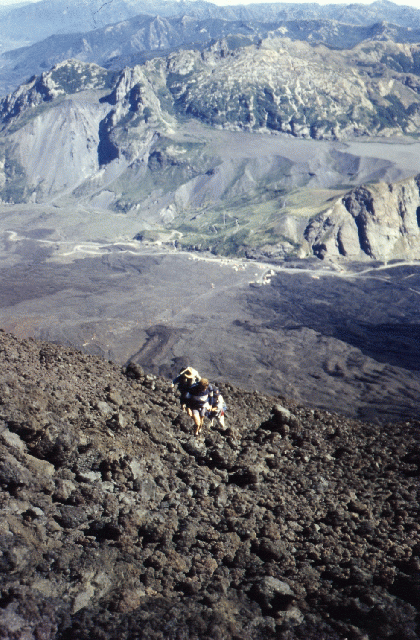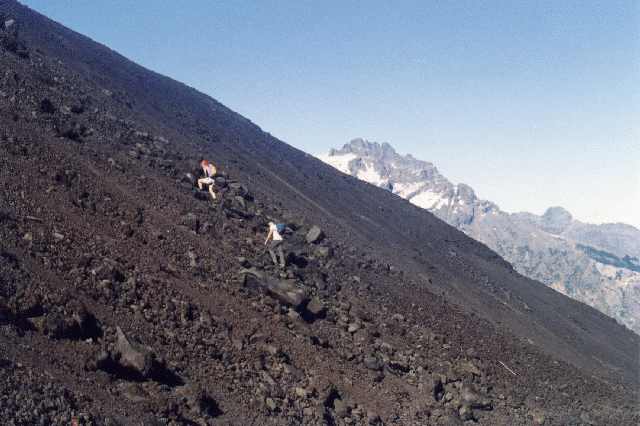
Region VIII, Chile
March 1993
While a postdoc in Chile, I went on a camping trip to southern-central Chile with a group of a dozen or so astronomers, friends and family. We spent a few days in this magnificent national park. I've selected out some of the nicest photos that also have educational value.
1) Our first view of the park was the snow-dotted cone of Vulcan Antuco:

2) One of our first trips was a day hike across a lava field. The lava had flowed several miles from the volcano itself, and where we crossed it was at least a mile wide and 10-20 feet deep. You can see it is composed of dark (iron-rich?) rock, in jagged blocks. Clearly, when it erupted, the lava was thick (not runny) and probably filled with lots of gas. In the distance you can see our objective, the non-volcanic mountain Sierra Vejuda (spell?). The white patches on the upper right are small glaciers, whose melt-stream has eroded a deep cleft into the rocks over time. From the glaciers, the stream falls a few hundred feet straight down into glacial ice cave, which we explored. Very cool:

3) The next day, we hiked up Vulcan Antuco itself. Great views of the surrounding mountain range (cordillera) and the lake. The entire mountain was made up of the same dark-colored jagged, volcanic blocks as the lower lava field (which is off the photo to the left):

4) Up up up... Take one step up, slide back half a step on the barely-stable slope of boulders. After about 6 hours, we didn't quite reach the summit. However, between sliding on the rocks and "glacading" on the snow, it took just over an hour to get down. Sierra Vejuda is in the background.

Here are some ballpark estimates that may help you appreciate the grandeur of this volcano from a scientific perspective:
(1) If the volcano is a cone 4000 feet high and 6000 feet in radius at the base (guestimated from photo #1), what is the volume of lava in the volcano?(2) If we approximate the lava flow we hiked across in photo #2 with a rectangular strip 4 miles long by 1 mile wide by 15 feet deep, what is the volume of lava in the flow?
(3) How many flows like that shown in #2 are required to build Vulcan Antuco?
(4) If the eruptions come at 100 year intervals, how long did it take to build Vulcan Antuco from nothing?
Obviously, these are very rough guesses, and a serious geologist would work it through with much more careful measurements and calculations. Still, our ballpark estimate gives us some ideas about the size and time scales involved in geology.